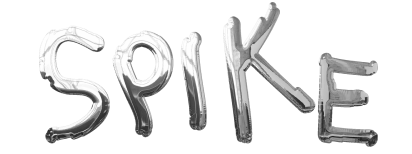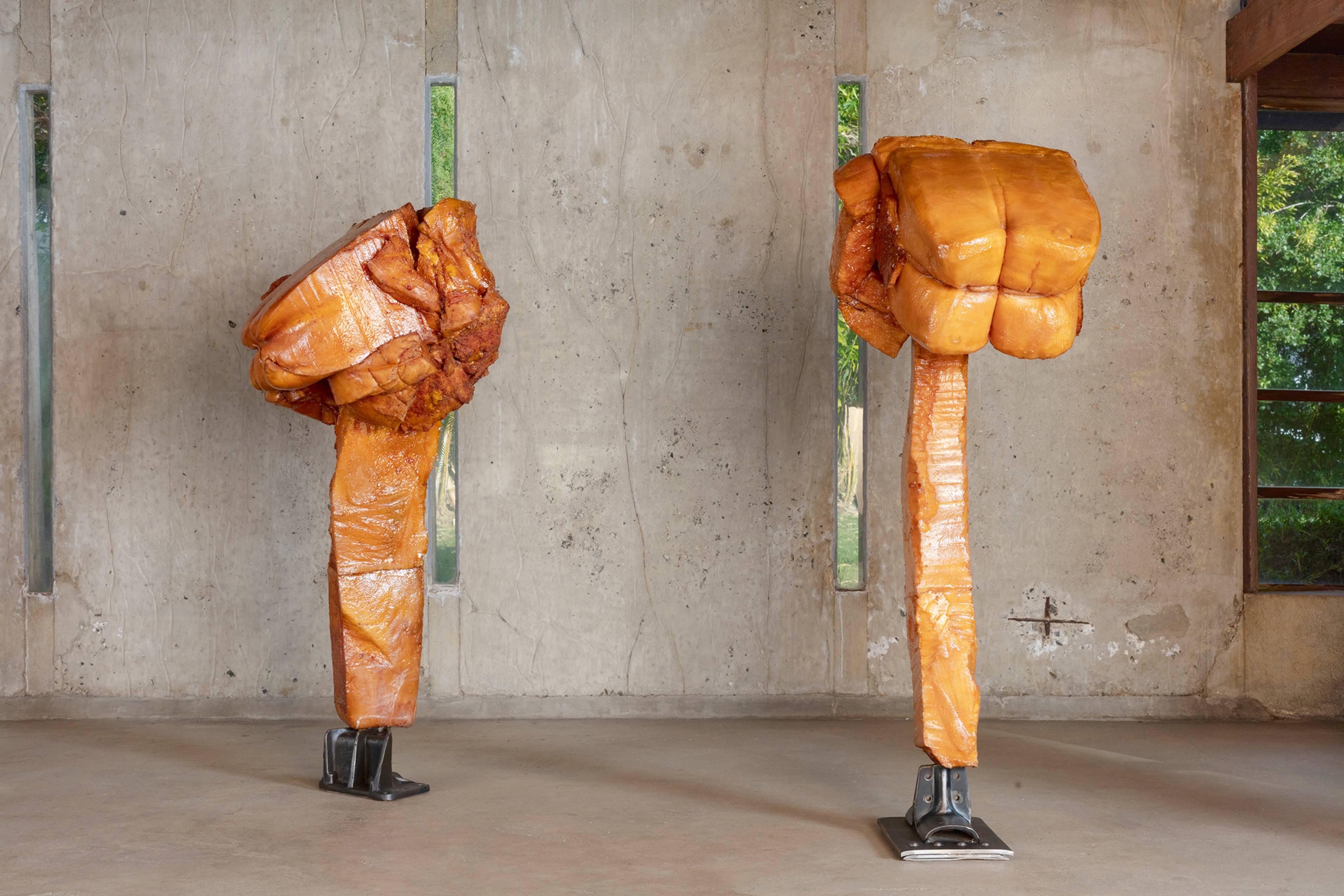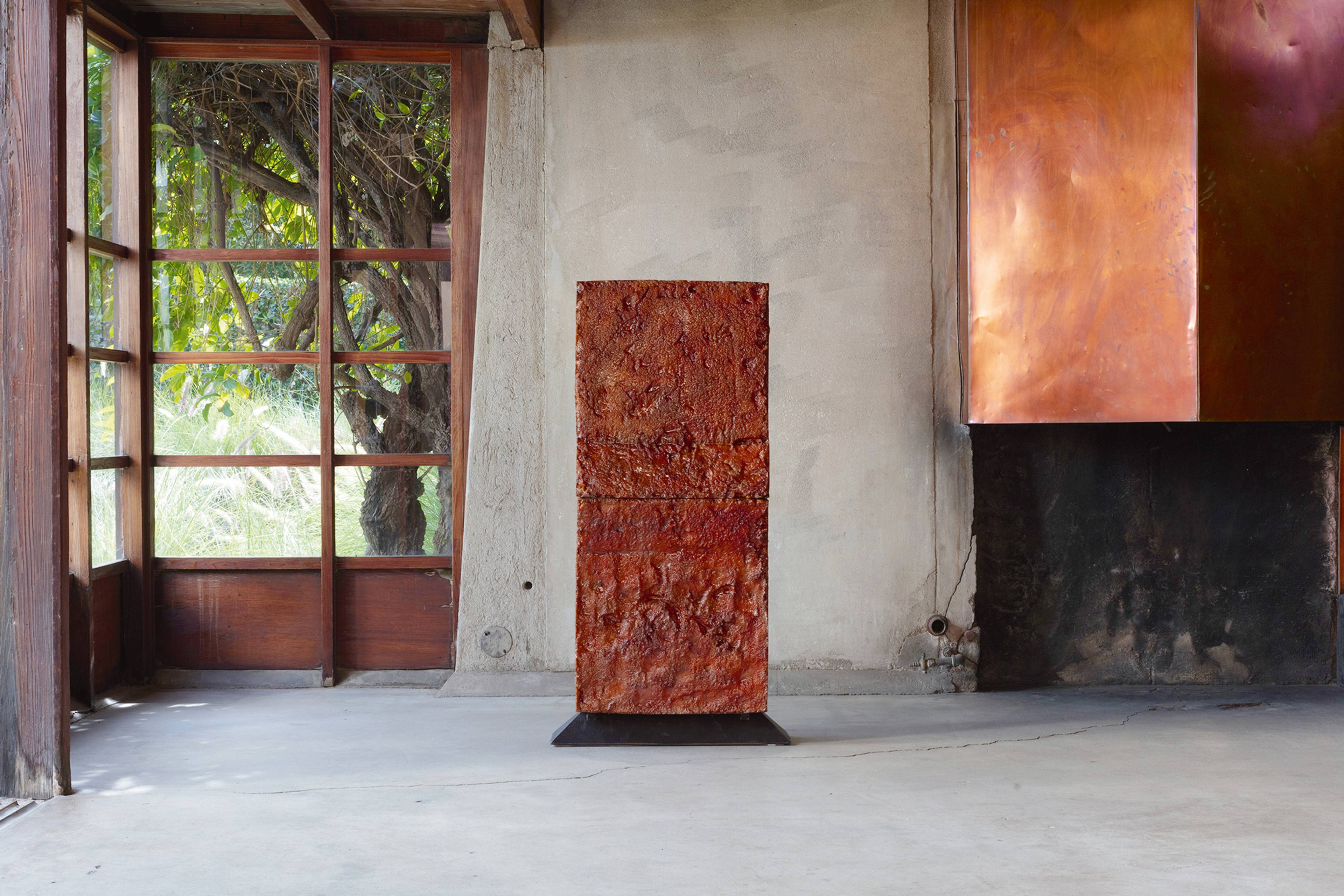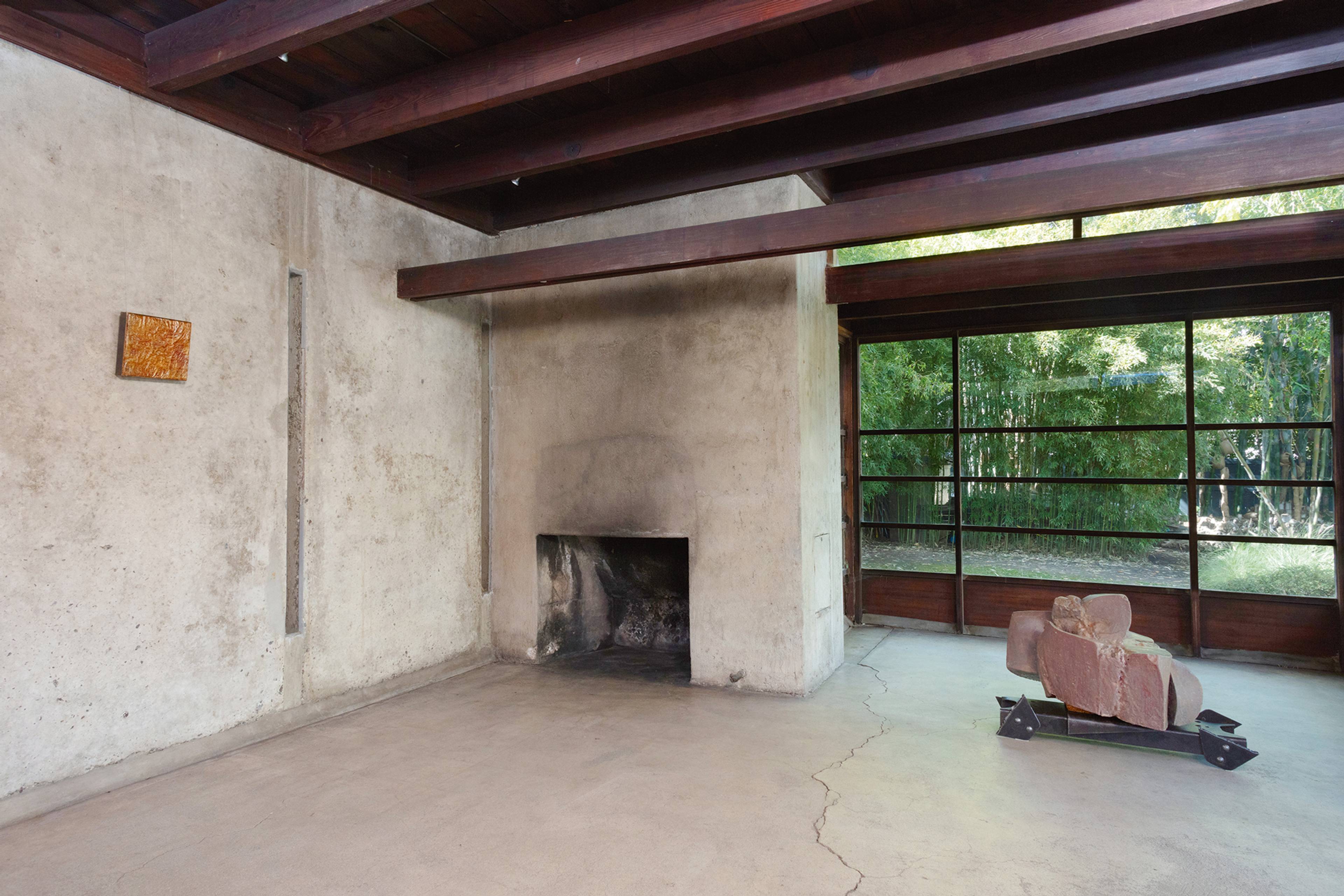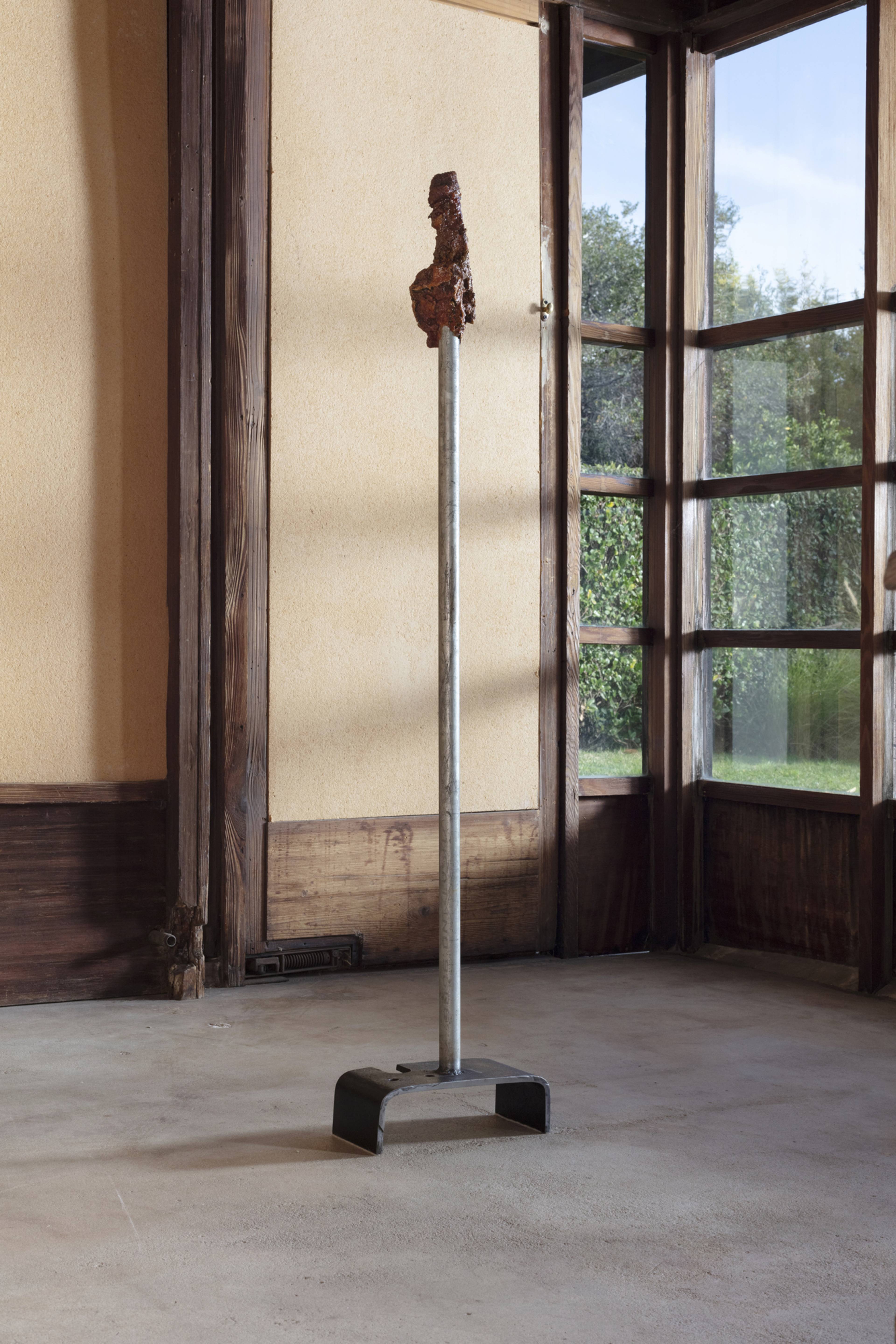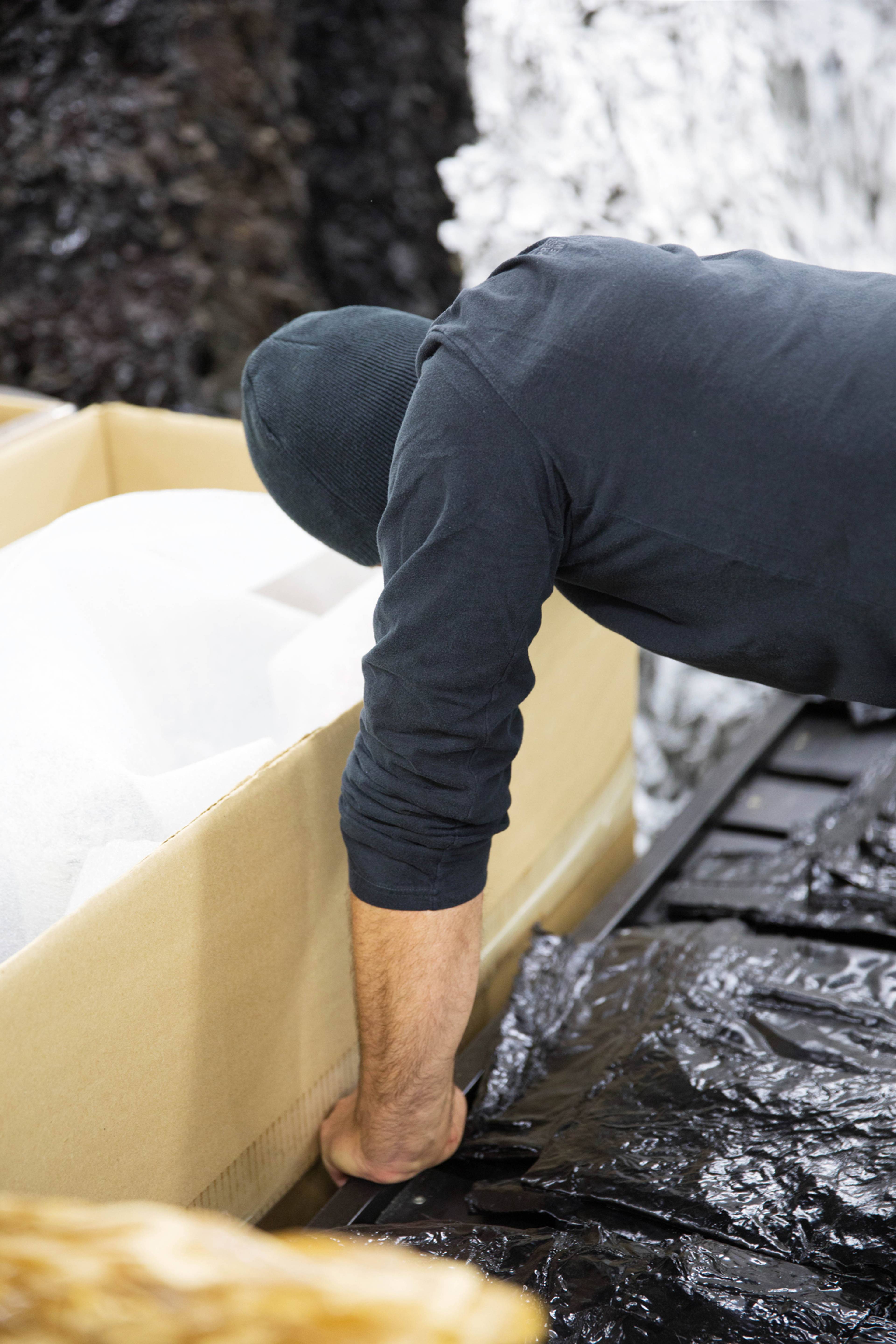Juliana Halpert: In her 1975 book Five California Architects, Esther McCoy writes, “from his first building, [Vienna-born architect R.M. Schindler] spoke a language that was clear and certain. It was a cultivated language, yet never scholarly; spontaneous but under the discipline of a controlling idea; its graceful phrasing never became automatic or mechanical.” Do you perceive your own practice as speaking a similar language, or one altogether different?
Helmut Lang: Architecture and art are two very different practices in their conception, production, and function, although I do see common ground in that quote. But I’m not interested in comparisons – I want to leave that work for others. I also don’t want to define my own language, because it is an ongoing conversation I am expecting from and with my work, and I don’t want to be confined to any one path. Which, contrary to Schindler, is not completed in my case.
I did not conceive the artworks for the Schindler House in particular, but nearly ten years before, except for four sculptures I made in 2024. Some of these are left with a semi-finished surface, to be completed through exposure to the LA climate and the audience.
The reality of a strong dialogue is nevertheless one of those conditions one can only hope for, and it is ultimately a multi-generational, multicultural audience who is contributing to that experience.
consenting position, 2015–17, shellac, pigment, resin, foam, steel, 111.1 x 57.8 x 19.1 cm
JH: Most of these works are made with soft, pliable foam that has been bundled and trussed, shaped into freestanding, “fist-like” forms and hardened with resin. Which makes your use of the word “uncompromising” to describe yourself – and Schindler – all the more meaningful. Is your relationship to your sculptures one of dominance and submission, of bending materials to your will? Or is your process more mutual, receptive, negotiated?
HL: It is not simple and one; it is complex and many. It is a relationship that is inevitably turbulent between the two while the creative process takes place, either physically or mentally.
This results in a flow of works or procedures that can be interrupted at any point. They are condensed, layered, broken up and again re-collected, and suddenly overtaken by another. At any given moment, a loss of control takes effect. If the sculpture is strong enough to fight back, that is often a good moment to stop. The final form is essentially the abstraction and distillation of opulent thoughts and possibilities.
To clarify, for me, being uncompromising in one’s work means not having the possibility of shortcuts, or of being an employee of mass taste, or of the concept of targeted audiences. The reality of authenticity comes about from following one’s instinctive unknowns, despite all circumstances, to achieve the new.
And, no – I do not have a sadomasochistic relationship with materials.
View of “What Remains Behind,” MAK Center for Art and Architecture, Los Angeles, 2025. Courtesy: the artist and MAK Center of Art and Architecture. Photo: Joshua Schaede;
JH: You have collaborated with the show’s curator, Neville Wakefield, on several occasions since 2007, including your first institutional solo exhibition at Kestner Gesellschaft, Hanover, in 2008. You have also referred to him as a friend. How did this relationship arise, and how has it evolved?
HL: I can’t remember how we met, but when we did, it was like we knew each other already – a mutual understanding of what is essential, of respecting sensibilities, of complementary skills. We project no expectations but honesty and trust. I’ve never thought about the benefits or where we were heading, and neither has Neville.
Both of our lives are so multilayered that, when we work together, we enjoy the plain experience and the time of exchange.
for you, 2024, shellac, resin, foam, steel, 120.7 x 25.1 x 11.7
JH: In his exhibition text, Wakefield identifies an “undertow of darker sexualized forms of desire” in your work. for you (2024) is perhaps the least abstract sculpture here, and undeniably the most phallic. It’s installed alone in a small room that, Wakefield informed me, was once used as a nursery. What led you to make a more figurative, “suggestive” work, and to present it this way? Do you also sense a “sexual current” in what you produce?
HL: I find it quite abstract. This particular sculpture was literally a leftover in the studio and not supposed to make it further than the studio. But it somehow held a strong presence, so I decided to give it some minimal final care.
It’s possible that it’s a finger, but most so far have seen it phallically. Realizing the irony and double meaning, I thought for you could be read either way, depending on the viewer: as danger or defense, lust or love, and then some. The placement was Neville’s choice.
It is part of the weight of the title, which is a reflection, a question, and a premonition. Looking at the past, the present, and the unknown in this moment is especially charged with more than one possibility, which is what I want all artworks to radiate.
P.S. The sexual current has been mentioned often since I handed my first artworks over to the public about thirty years ago. Obviously, that’s what the audience has been feeling, among other emotions.
Photo: Daniel Trese
___
“What Remains Behind”
MAK Center for Art and Architecture at the Schindler House, Los Angeles
19 Feb – 4 May 2025
Helmut Lang
curated by Marlies Wirth
MAK, Vienna
10 Dec 2025 – 3 May 2026
